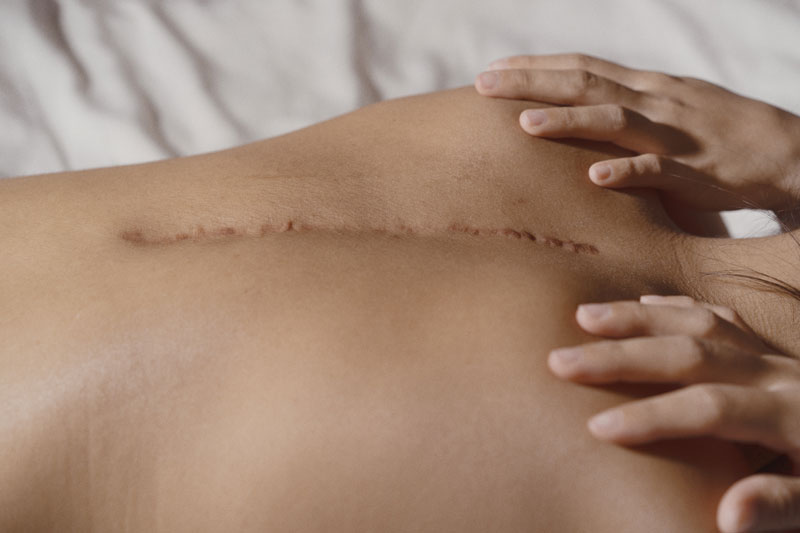On rules for photographing
Singaporean artist Woong Soak Teng, recipient of the Objectifs Documentary Award 2021 (Emerging Category), is presenting her first solo exhibition rules for photographing a scoliotic patient at Objectifs till 29 May 2022. The show delves into her personal experience with scoliosis (abnormal curvature of the spine) and the experiences of other individuals with scoliosis that she had interviewed and photographed.
Read on for a recap of Soak Teng’s sharing about her project and her conversation with photographer Grace Baey, recipient of the inaugural Objectifs Documentary Award (Emerging Category) in 2018 for (Un)bound, a documentary project about transgender people in Singapore. Their conversation was moderated by Chelsea Chua, Programme Director at Objectifs.
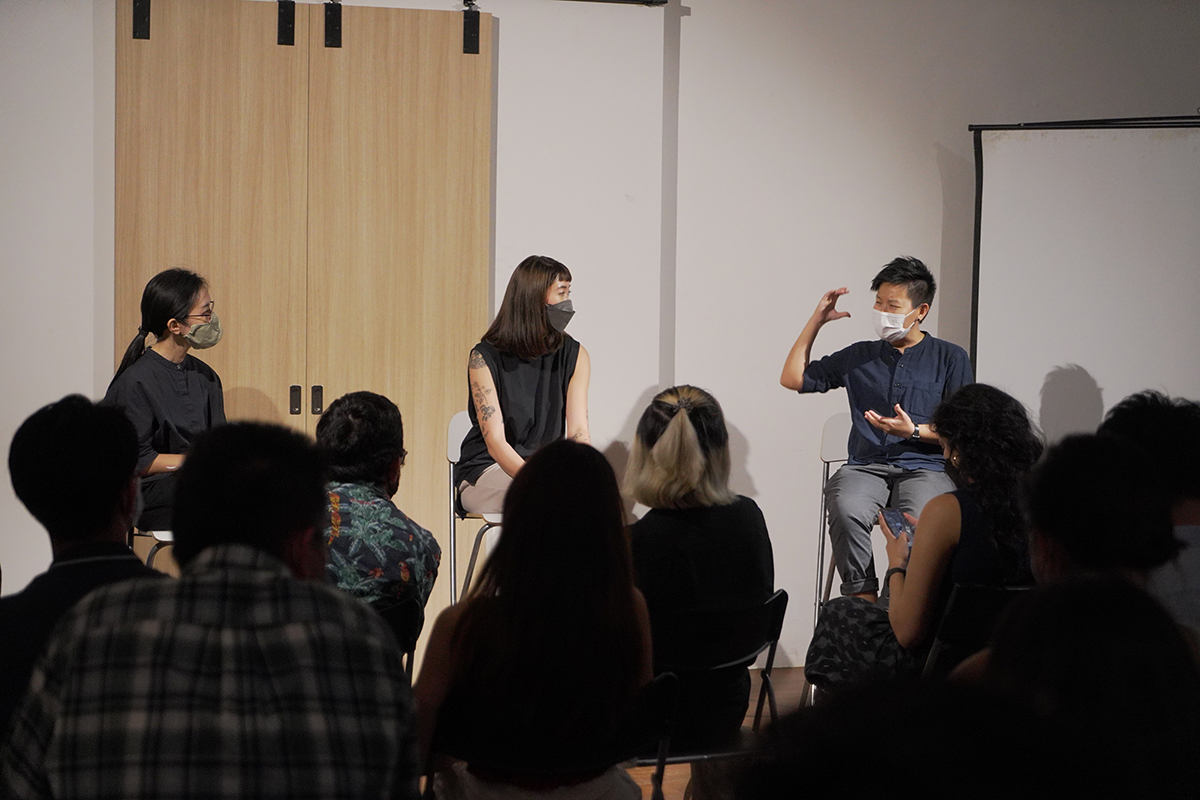
From L-R: Chelsea Chua, Woong Soak Teng & Grace Baey in conversation
About rules for photographing a scoliotic patient
Soak Teng was influenced by books and archival photographs that she had encountered in the Wellcome Collection, a medical library in London. Having undergone surgery for scoliosis as a teen, she was particularly drawn to books about scoliosis in the library. One of the books had a cover illustration of a tree that had been tied up in order to straighten it, which reminded her of her own work, ways to tie trees (available as a photo book via the Objectifs Store). As a creative exercise, she tied a crooked tree branch to a canvas in order to straighten it, which revealed a scar-like pattern at the back of the canvas that she could connect back to her own condition.
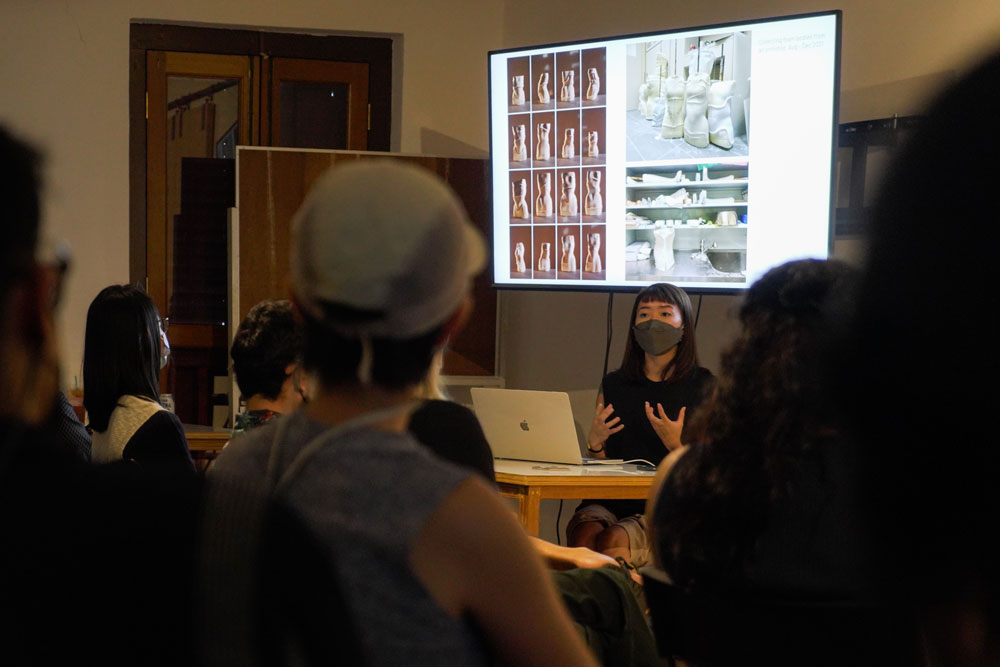 Soak Teng then went on to make a zine out of the medical texts, photographs, and illustrations she saw in the archives. She was particularly struck by the prescriptive nature of one of the archival texts, which detailed the various rules of photographing a scoliotic patient. As an image-maker, Soak Teng wanted to subvert these “rules” and decided to embark on a project of taking photos and videos of scoliotic individuals in a more subjective and nuanced manner. The project culminated in both the exhibition currently on view, as well as a book of photographs and interviews with scoliotic individuals, focusing on each subject’s personal journey with scoliosis.
Soak Teng then went on to make a zine out of the medical texts, photographs, and illustrations she saw in the archives. She was particularly struck by the prescriptive nature of one of the archival texts, which detailed the various rules of photographing a scoliotic patient. As an image-maker, Soak Teng wanted to subvert these “rules” and decided to embark on a project of taking photos and videos of scoliotic individuals in a more subjective and nuanced manner. The project culminated in both the exhibition currently on view, as well as a book of photographs and interviews with scoliotic individuals, focusing on each subject’s personal journey with scoliosis.
Setting one’s own rules for photographing
Chelsea: I thought we could title the talk “Rules for Photographing” because it was interesting how both of your projects sought to challenge normative ways of viewing the body, and also how both of you devised your own rules for photographing people that you wanted to work with. Do you want to talk more about that?
Soak Teng: Although the talk is titled “Rules for Photographing”, there isn’t really a strict set of rules on how to photograph or how to work with people. As an image-maker, you develop your own approach and set your own parameters. In working with scoliotic individuals, I don’t engage with them for a long period of time like Grace does. I have two- to three-hour sessions with them, and it works more like a visual exercise.
Grace: Soak, I saw that your intentions for the project were to challenge the medical gaze and to think about critical approaches in terms of representation. Those are very similar themes to what I had for my project as well. It was also interesting that we both went beyond the still photograph to put forward the themes in our work, like how you used audio-visuals, text, interviews, and materials from the archive. Especially the foam bust, which looks like a still and beautiful product photo from a distance, yet in the context of the project there’s almost a violence to it.
When we think about issues of representation, often if the problem lies in the image itself, we cannot rely on just the logic of the still image to challenge that. Instead, we should look at what surrounds the image in order to question and think about how we can perceive these images through a different lens.
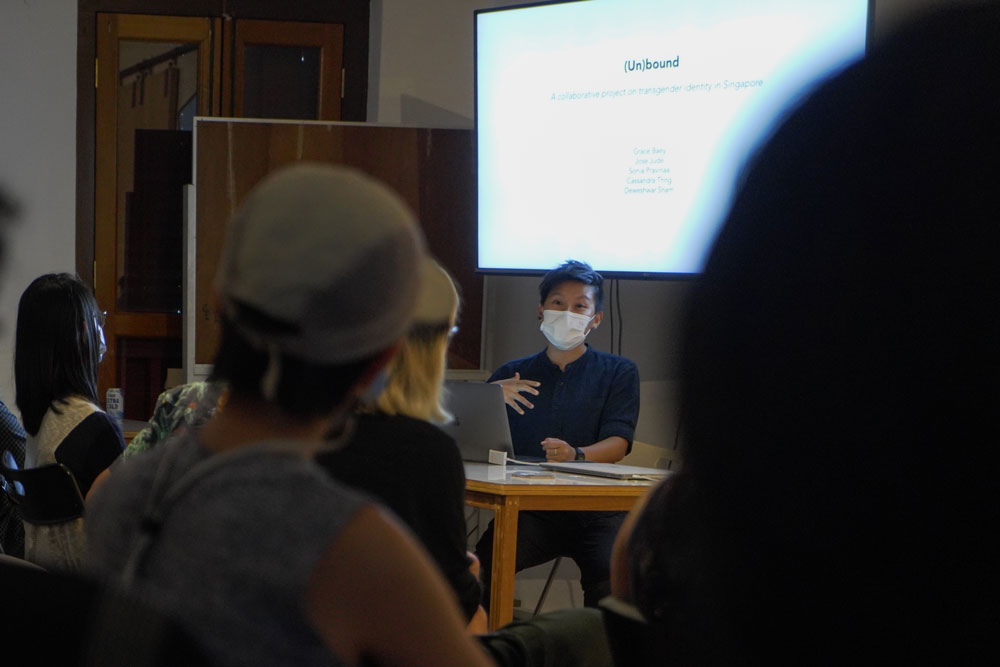
Building a connection with collaborators
Chelsea: How did you build rapport with your collaborators?
Soak Teng: I first put out an open call on my own Instagram, telling everyone that I was working on a project about scoliosis. I was very surprised, because quite a number of people whom I’ve worked or studied with replied and said, “Hey, I actually have scoliosis. You have it, too?” I just didn’t know about it because people don’t talk about it, and it’s not something that is always visible.
Later on, I put up an open call in Scoliosis Support Singapore, which is a Facebook support group where people can find more information about scoliosis. There, I also received a lot of very welcoming responses. Most of the people that you see in this project now are from the support group.
Chelsea: How did both of you frame your project to your collaborators?
Soak Teng: [Receiving] the Objectifs Documentary Award and knowing that there would be an exhibition happening helped me to communicate more clearly to my participants. It helped me illustrate to them what the end result would look like. I made it quite clear to each individual that there will be a photograph, a moving image, and then a conversation. What was different was going into someone’s bedroom and meeting them for the first time. I connected with them because we have the same condition, and that rapport was easy to build. Plus, we always started off by sharing with each other our experiences of scoliosis.
Grace: I went through a scrapbooking exercise with my collaborators, which allowed them to choose photos that meant something to them, and to sequence the photos in a way that told the story that they wanted to tell about themselves. The process was also very transformative for me, because the end product was nothing that I could have envisioned or done on my own. As photographers, sometimes we tend towards a certain visual aesthetic – making images we know will look good – and the scrapbooks throw that out altogether. The person curating the images only has their story and self-representation in mind, and not this need to prove anything aesthetically.
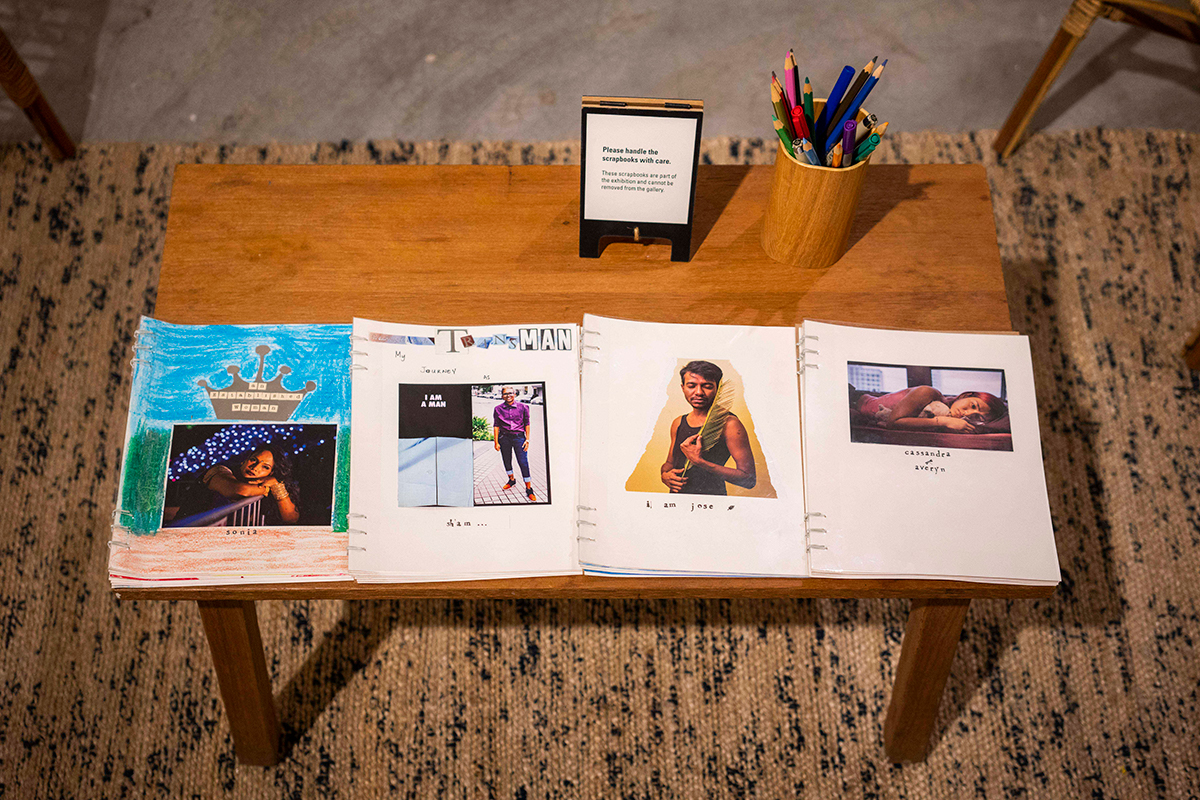
The scrapbooks created by Grace’s collaborators in (Un)bound. (Image Credit: Grace Baey)
Soak Teng: Some of the scoliotic individuals, when they responded to my open call, said, “I’ve always wanted to take a picture of my scar. But I’ve never found someone who could do it for me.” or “I’ve actually never seen my back in full before.” When I first started taking pictures, I would link up an iPad with my camera so that as the camera gazed onto their back, they could see themselves in the iPad in front of them. I was trying out how I could balance out that gaze and let them have more agency in the image making process.
Sharing images with a wider audience
Chelsea: I wanted to touch on what happens when images are shown to the public. What considerations did you have when sharing these images with the public?
Grace: I had quite a bit of anxiety for the show, especially with [one of my collaborators] Jose. Showing that image of him putting on his binder put him in a very big position of vulnerability. We made the project for the purpose of the exhibition being shown in a physical space, so we tried as much as possible to ensure that the images were just viewed in that space, and that no one should take any photos on their phones and circulate them online.
Just to share a heartening story, last year Jose managed to save up for his surgery, and I was supposed to go with him [in Malaysia]. But with Covid-19, the borders were closed and I couldn’t go. He told me that he brought along a book of images from the project with him as a reminder and celebration of how far he has come along in his journey. It was good to hear his perspective because as much as I was particularly anxious about that image, he told me that “I’d like to look back at this image and feel happy to know how far I’ve come along.”
Soak Teng: Similarly, my work deals with partial nudity. At the very beginning of developing the work, I decided that the images didn’t need to show the faces of these individuals, because the work doesn’t require you to know that person’s identity. But in the long run, when you make a work and it’s out in the world, you will lose control of it and it will take on a life of its own. So anonymity became part of this whole decision to want to protect the people that had been very gracious with space and time.
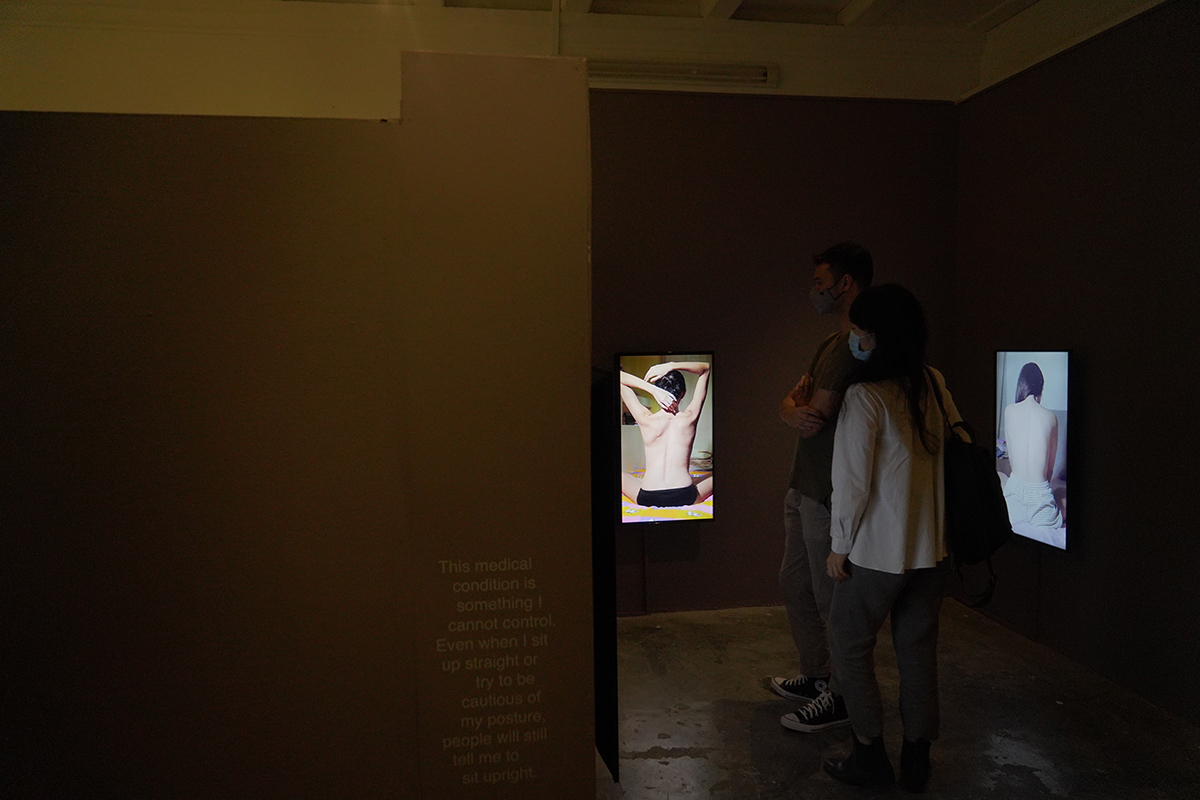
Installation view of the videos in ‘rules for photographing a scoliotic patient’ by Woong Soak Teng
In the exhibition layout, we also wanted the videos to have their own personal, private space. When you come in, you don’t see the bodies directly but kind of have to take a journey. Most of the works are also in the form of a book, so you spend a lot more personal time with the materials. I think people who are interested to see the work will make the effort to find out more.
rules for photographing a scoliotic patient by Woong Soak Teng runs in Objectifs’ Lower Gallery till 19 June 2022.
Recap by Wenxin Gao

